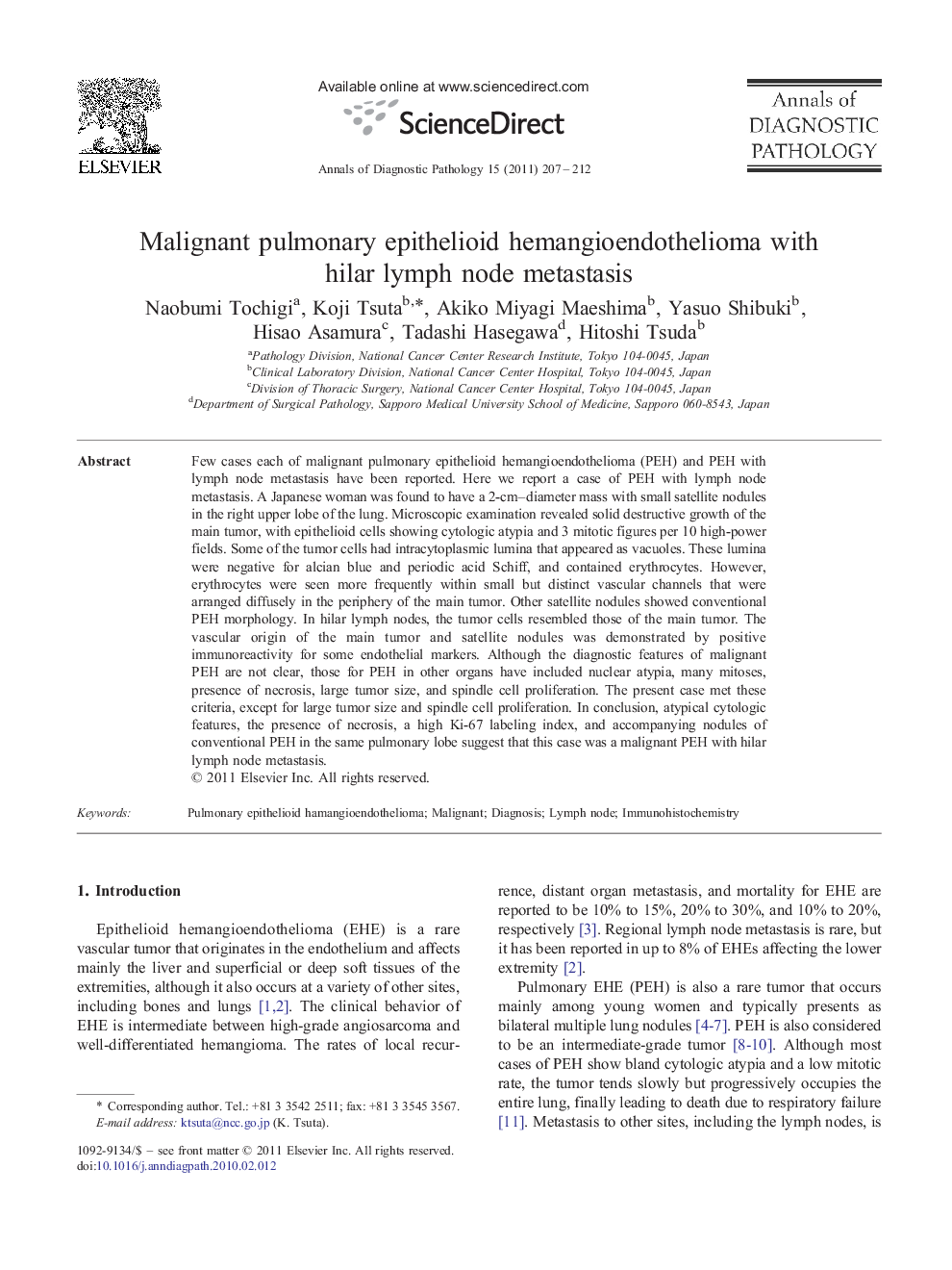| Article ID | Journal | Published Year | Pages | File Type |
|---|---|---|---|---|
| 4130478 | Annals of Diagnostic Pathology | 2011 | 6 Pages |
Few cases each of malignant pulmonary epithelioid hemangioendothelioma (PEH) and PEH with lymph node metastasis have been reported. Here we report a case of PEH with lymph node metastasis. A Japanese woman was found to have a 2-cm–diameter mass with small satellite nodules in the right upper lobe of the lung. Microscopic examination revealed solid destructive growth of the main tumor, with epithelioid cells showing cytologic atypia and 3 mitotic figures per 10 high-power fields. Some of the tumor cells had intracytoplasmic lumina that appeared as vacuoles. These lumina were negative for alcian blue and periodic acid Schiff, and contained erythrocytes. However, erythrocytes were seen more frequently within small but distinct vascular channels that were arranged diffusely in the periphery of the main tumor. Other satellite nodules showed conventional PEH morphology. In hilar lymph nodes, the tumor cells resembled those of the main tumor. The vascular origin of the main tumor and satellite nodules was demonstrated by positive immunoreactivity for some endothelial markers. Although the diagnostic features of malignant PEH are not clear, those for PEH in other organs have included nuclear atypia, many mitoses, presence of necrosis, large tumor size, and spindle cell proliferation. The present case met these criteria, except for large tumor size and spindle cell proliferation. In conclusion, atypical cytologic features, the presence of necrosis, a high Ki-67 labeling index, and accompanying nodules of conventional PEH in the same pulmonary lobe suggest that this case was a malignant PEH with hilar lymph node metastasis.
